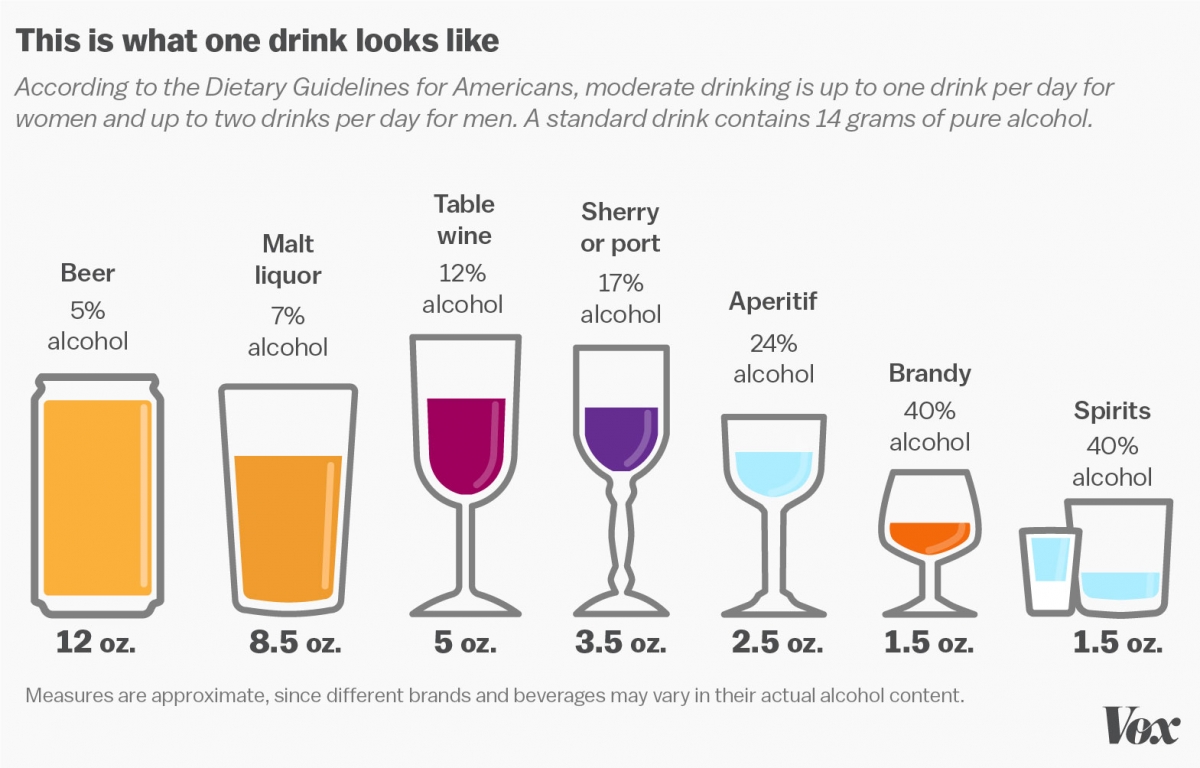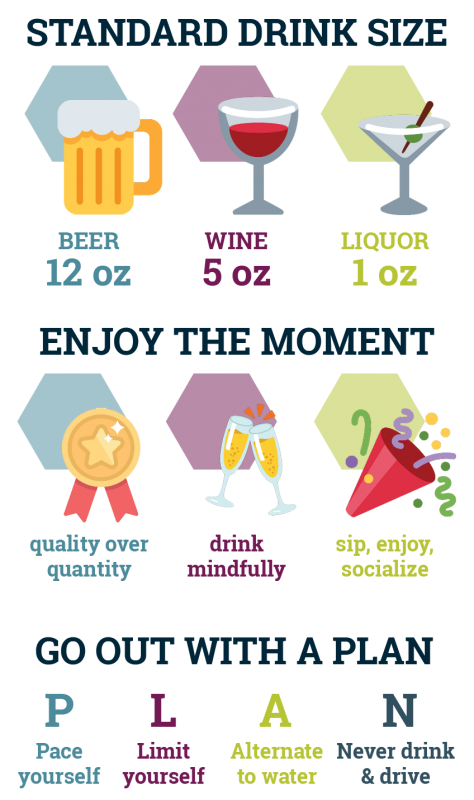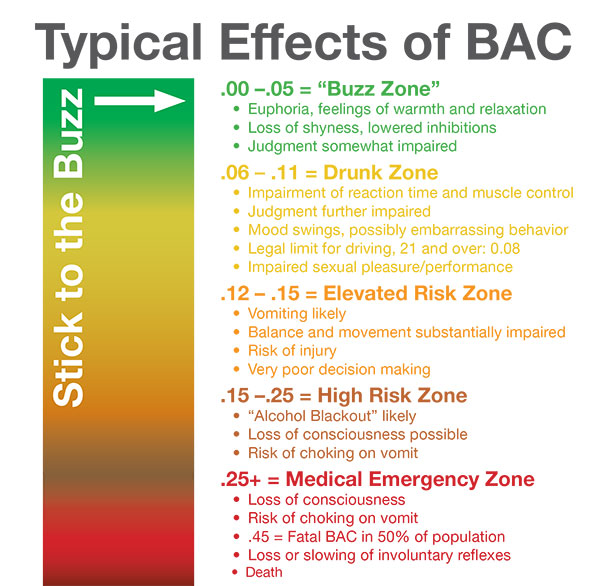
The best way to drink smart is to be strategic. Being knowledgeable about alcohol, using safe drinking strategies, and understanding all your options before you get started will help you have the best time if you choose to drink alcohol. Scroll down to learn more about what a standard drink is, what BAC is and how it affects you, alcohol poisoning, and strategies to drink smarter.

Standard Drink
In the United States of America, a "standard" drink is any drink that contains about 0.6 fluid ounces or 14 grams of "pure" alcohol. Although the drinks above are different sizes, each contains approximately the same amount of alcohol and counts as a single standard drink. (NIAAA)
The definition and concept of a “standard” drink is important in order to consume alcohol in a lower-risk manner. A “standard” drink is NOT simply whatever container is used to hold the alcoholic beverage.
Alcohol Poisoning
If something's wrong, make the right call. The Good Samaritan Provision lets you do the right thing when things go wrong. Here are some signs of potential alcohol poisoning to watch for:
- Hypothermia (low body temperature), discolored skin color, paleness
- Mental confusion, stupor, coma, or person cannot be roused
- Irregular breathing (10 seconds or more between breaths)
- Slow breathing (fewer than eight breaths per minute)
- Vomiting
- Seizure
In case of emergency, call GTPD: (404) 894-2500
Strategies for Cutting Down on Drinking
Small changes can make a big difference in reducing your chances of having alcohol-related problems. Whatever strategies you choose, give them a fair trial. If one approach doesn't work, try something else. But if you haven't made progress in cutting down after 2 to 3 months, consider quitting drinking altogether, seeking professional help, or both.
Visit the Rethinking Drinking: Alcohol & Your Health website to create a personalized list of strategies.
Keep track.
Keep track of how much you drink. Find a way that works for you, carry drinking tracker cards in your wallet, make check marks on a kitchen calendar, or enter notes in a mobile phone notepad or personal digital assistant. Making note of each drink before you drink it may help you slow down when needed.
Count and measure.
Know the standard drink sizes so you can count your drinks accurately. Measure drinks at home. Away from home, it can be hard to keep track, especially with mixed drinks, and at times, you may be getting more alcohol than you think. With wine, you may need to ask the host or server not to "top off" a partially filled glass.
Set goals.
Decide how many days a week you want to drink and how many drinks you'll have on those days. It's a good idea to have some days when you don't drink. Drinkers with the lowest rates of alcohol use disorders stay within the low-risk limits.
Pace and space.
When you do drink, pace yourself. Sip slowly. Have no more than one standard drink with alcohol per hour. Have "drink spacers"—make every other drink a non-alcoholic one, such as water, soda, or juice.
Blood Alcohol Concentration
Blood alcohol concentration (BAC) is a commonly used measure of alcohol intoxication, also known as drunkenness. It is typically expressed as a percentage of alcohol per volume of blood. For example, in the United States (US), a BAC of 0.08 (0.08%) would translate to 0.08 grams of alcohol per 100 mL of blood.
Your Blood Alcohol Concentration (BAC) is affected by several factors including:
- How many drinks you have had
- How long you have been drinking
- What you are drinking (see standard drinks, above)
- Your physical make up including weight and biological sex (mass, hormones, and percentage of body fat determine how alcohol is processed)
- How recently and how much you’ve eaten
- If you take any medications or use drugs that may interact with alcohol
If you want to know your BAC, check out this calculator.

Have a PLAN
When deciding how to drink smart, knowing the best options helps you make informed decisions. Choosing not to drink at all is a great option because it is the only legal option for students under 21 and there are no negative consequences, like hangovers or blackouts. However, if you do decide to drink, here are some strategies that can make the night more fun and safer.
The Wellness Empowerment Center suggests you try making a P.L.A.N.!
- Pace Yourself
- Limit Yourself (standard drink size)
- Alternate to water
- Never drink & drive
